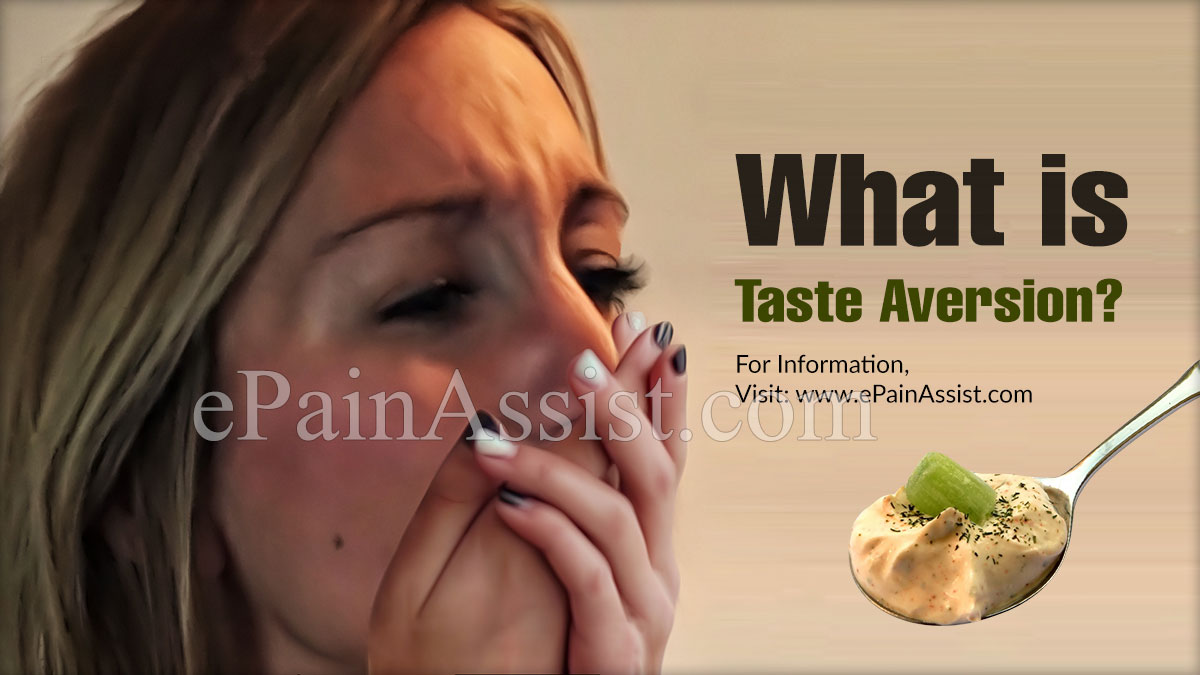Taste aversion is also known as conditioned taste aversion and it is a tendency to either avoid or form negative associations with a particular food, particularly when you have eaten that just before falling sick.(1) Many people around the world suffer from taste aversion and this condition is also a subject of conversation amongst experts.
When asked the question about what food they dislike, people usually have a story that is related to their negative experience with the food they refuse to eat. In most cases, taste aversion develops after eating a food that then causes vomiting, nausea or sickness. In animals, taste aversion often serves as a survival mechanism, training the body to avoid any poisonous substance that has caused the animal to fall sick once.(5) So what exactly is taste aversion and what causes this condition? Let us take a moment to understand taste aversion.

What is Taste Aversion?
One of the biggest examples of conditioned taste aversion is when you consume a particular food and then end up getting the flu immediately afterward. Then even after a long time after the incident, consciously or subconsciously, you start avoiding that food because your mind associates it with the time you fell sick after having that food.(2) This will happen even though that food had no role in causing your illness since of course, the flu does not spread in this manner.
This condition is known as conditioned taste aversion because your brain has trained you to avoid the food, even though it had no relation to your illness. This is known as single-trial conditioning because it only took one chance for you to become conditioned to think negatively about the food or to start avoiding it altogether.
Taste aversions occur both consciously and unconsciously.(3) At times you start avoiding that food unconsciously without really realizing why you are doing so.(3) How much of that particular food you consumed or how sick you got determines the strength of your conditioned taste aversion.
Causes of Taste Aversion
Taste aversion typically happens after you eat something and then you fall sick.(1) This illness usually has nothing to do with the food and tends to involve nausea and vomiting. The more intense your sickness, the longer your taste aversion tends to last.
Some illnesses or conditions, not related to the food you have consumed, can also trigger vomiting and nausea, contributing to this taste aversion. These conditions or illnesses may include:
- Anorexia(1)
- Bulimia
- Chemotherapy(4)
- Liver failure
- Motion sickness
- Ear infection
- Rotavirus infection
- Pregnancy or morning sickness
- Drinking too much alcohol
- Stomach flu
- Overeating
How To Get Past Taste Aversion?
Food aversions or taste aversions are typically psychological. You do not have an allergy to the food, but your mind starts associating that food with the instance when you fell sick.
Here are some ways in which you can overcome or combat taste aversions.
Try To Cook The Food In A New Way: For example, if you became sick after consumption of fried eggs, then you should try to cook the eggs in a different manner, say trying it in an omelet form the next time. This will avoid the link of the eggs with the same sickness as before.
Make New Food Associations: You may have associated the flavor of coconut with the time you feel sick after eating a coconut cream pie, so you start associating coconut with vomiting. However, make a conscious effort to try associating coconuts with vacations, tropical islands and a relaxing time on a warm beach. This will break your original association and create a new one instead hence fighting the taste aversion you have developed.
Gradually Increasing Your Exposure To Taste: By slowly increasing your exposure to the particular taste you have developed an aversion to, will help prevent you from feeling disgusted or sick about that taste. You can try to first smell it, and then taste a little bit of the food to increase your exposure.
Can Taste Aversion Indicate a Bigger Problem?
While generally taste aversion is not a problem, but sometimes it can indicate a more serious underlying problem, such as an eating disorder.(6) If you are suffering from certain taste aversions, then it will have an impact on your ability to have a balanced diet. This is why discussing with your doctor to find out whether you may be suffering from an eating disorder is important.
Conclusion
Taste aversions tend to occur when you fall sick, usually develop nausea or vomiting, after eating a certain food. Your brain then starts to associate this food with the sickness. In some cases, taste aversion disappears with time, but sometimes taste aversions may be an indication of an underlying eating disorder. Some people also report experiencing a taste aversion years after the actual incident with the food happens.
- https://www.ncbi.nlm.nih.gov/pmc/articles/PMC6051479/
- https://www.sciencedirect.com/science/article/pii/S209588111830026X?via%3Dihub
- https://www.healthline.com/health/taste-aversion
- https://www.ncbi.nlm.nih.gov/pubmed/2990286
- https://link.springer.com/article/10.3758%2Fs13423-016-1092-8
- https://www.researchgate.net/publication/323733915_How_Does_Food_Taste…
